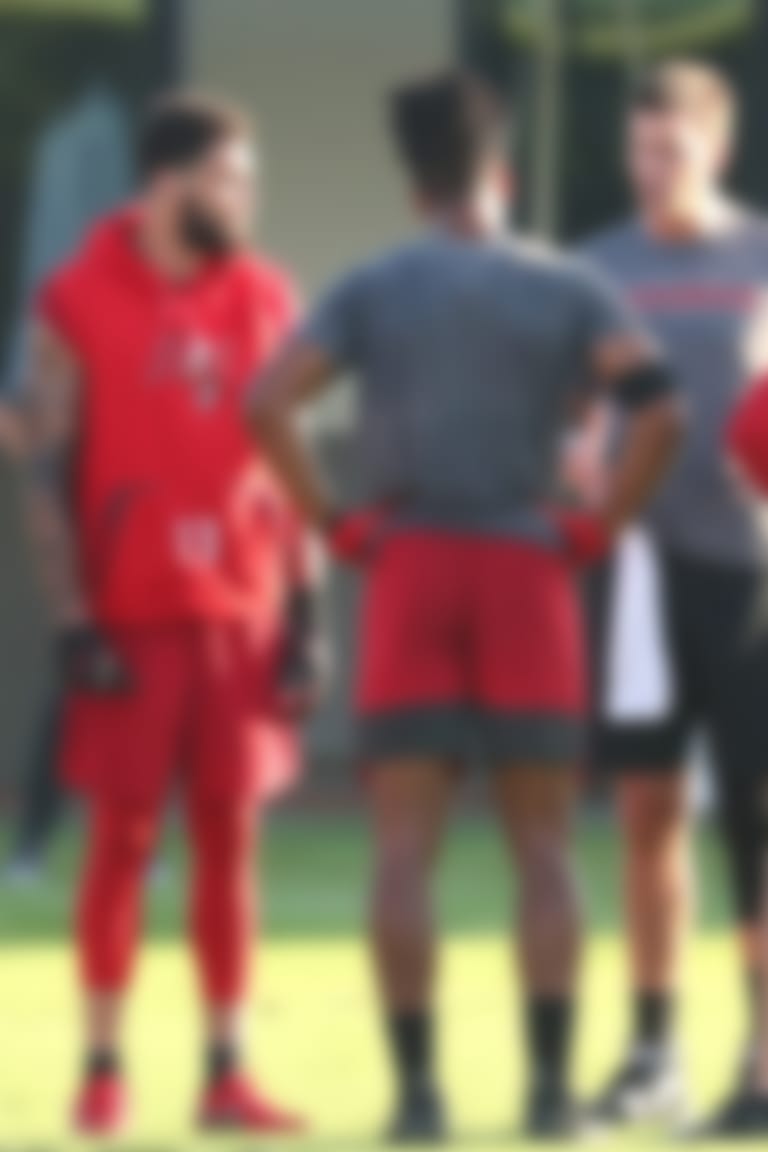In a quest to get back to the playoffs and win another Super Bowl, Tampa Bay went all in on Tom Brady. But can the Buccaneers live up to the lofty expectations set by their new leader?
By Judy Battista | Sept. 9, 2020
When he signed his contract with the Tampa Bay Buccaneers in March, Tom Brady talked to general manager Jason Licht. Six months later, a few things still stand out to Licht from that conversation.
The first is that Brady told him how many hours the Bucs had until they would play the regular-season opener, which was later announced to be against the New Orleans Saints. On that spring day, Brady's debut as a Buc was roughly 4,270 hours away.
The second is that Brady wanted all the phone numbers of his new teammates. Immediately.
"I've got to get to work," the quarterback said.
That day, Brady mentioned to Licht a couple things about which the GM needed no reminding. That the Bucs share a division with Sean Payton and Drew Brees, who are about to start their 14th season together. That also in the division are the Atlanta Falcons, where Matt Ryan has had the same coach, Dan Quinn, for six years. The Bucs, after all, had finished behind one or both of those teams in all but two of the last 17 seasons.
Brady might recognize the benefits of continuity better than any other person in the NFL. He had been with the New England Patriots for two decades, and in all that time, he never had to adjust to the whims of a new head coach or memorize the language of new playbook. And even as Brady anticipated the uphill climb he faced to get acclimated to his new team, he never could have imagined the additional obstacles a pandemic would put in his way.
Over at the golf course where Clyde Christensen plays, the Buccaneers quarterbacks coach had been having fun those spring days, as the rumors started swirling around town that Brady was interested in Tampa Bay. It was simply too much for his friends to believe. "Aw, come on, coach," the golfers would say when Christensen told them he thought this might really happen. No one really took this flirtation seriously, the 64-year-old football lifer realized.
Christensen thought the Bucs and Brady were a good match all along, so he was hopeful, but for Bucs fans whose previous brush with quarterbacking immortality came when the team selected Steve Young first overall in the 1984 ����������Supplemental Draft of USFL and CFL Players -- only to trade him a few years later to San Francisco, where he became a Hall of Famer -- the possible arrival of Brady seemed much too good to be true.
"I think everybody thought he was going to end up going back to New England," Christensen said. "You know, 'It's just politics and he'll end up back in New England and we'll be heartbroken.' "
Instead, Brady alighted on Tampa almost immediately after signing his contract, moving his family into Derek Jeter's waterfront mansion -- St. Jetersberg needs a new name -- barging into unfamiliar homes in search of his new offensive coordinator Byron Leftwich, wandering into closed public parks looking for a place to throw in his own sprint to catch up.
Still, with the ����������consigned to virtual workouts as COVID-19 raged throughout the offseason, this world-turned-upside-down transaction felt surreal, gathered with a few receivers at a local high school field glimmering in the distance like a mirage.
Even now, the sight of the great Brady in a creamsicle practice jersey is jarring for a lot of people in the NFL. But the confirmation for everyone from local duffer to opposing defensive coordinator came in July, when a building-sized image of Brady went up on Raymond James Stadium. Brady is really a Buc.
What this means for Brady may take a season to sort out, although the organizational urgency was made clear when the Bucs signed running back Leonard Fournette at the end of training camp. What it means for the Bucs can already be measured, if not in ticket sales that will be curtailed by COVID-19 restrictions, then in the buzz that surrounds the team.
The banners on the façade of the stadium have long celebrated the team's biggest stars, monuments without the marble. The faces of the franchise, though, have been mostly interchangeable since the era of Ronde Barber, John Lynch and Warren Sapp. Those were the halcyon days of the Bucs, which birthed an historically great defense and Tampa Bay's lone Super Bowl championship.
The banners have continued to go up and come down, following the vagaries of player acquisition and performance, documenting the cycles of hope and disappointment more colorfully than any stat sheet could. For much of that span, the Bucs were football also-rans and they were frequently boring, too, the excitement more often surrounding the players who trained across the street, at the New York Yankees spring training facility. As a result, reporters were nearly as likely to mention the halftime Bananas Fosters served in the press box as anything good that happened on the field.
Christensen has a unique view of the town. He first started working in Tampa in 1996, as a member of Tony Dungy's staff that eventually resurrected a moribund franchise and put in place the roster that, in the 2002 season, won Super Bowl XXXVII with Jon Gruden.
"This is a great football town," Christensen said. "I was privileged to see it light up in the late 1990s, when it became a great place to play and be around football. Since Tom's been here, I've seen that excitement start coming back into the picture. It's a wake-up call for everybody. This has a chance to rock again real soon."















